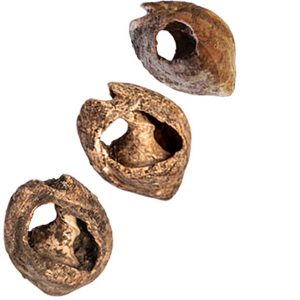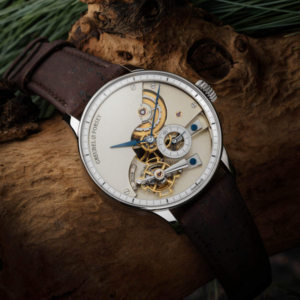
When the jewelry industry says people have been adorning themselves for a long time, it isn’t kidding.
Between 2014 and 2018, a team of archeologists discovered 33 shell beads at the Bizmoune Cave in western Morocco, which have since been determined to be between 142,000 and 150,000 years old. That makes them possibly the oldest piece of jewelry ever discovered.
A study published in the journal Science Advances notes that previous finds in northern and southern Africa have uncovered beads that were determined to be between 100,000 and 135,000 years old.
But this new find tops that, and it could represent “the earliest known evidence of a widespread form of nonverbal human communication,” according to the study’s authors.
Which raises the question: What exactly were our ancestors trying to communicate with these objets? That has yet to—and may never—be determined.
Steven L. Kuhn, a professor of anthropology in the University of Arizona College of Social and Behavioral Sciences, said in a university statement that holes in the center of the beads, as well as other markings from wear and tear, indicate that they were hung on strings or from clothing.
“They were probably part of the way people expressed their identity with their clothing,” Kuhn said. “They’re the tip of the iceberg for that kind of human trait. They show that it was present even hundreds of thousands of years ago, and that humans were interested in communicating to bigger groups of people than their immediate friends and family.”
Kuhn added that the find raises more questions than it answers.
“We don’t know what they meant, but they’re clearly symbolic objects that were deployed in a way that other people could see them,” he said. “It’s one thing to know that people were capable of making them, but then the question becomes, ‘OK, what stimulated them to do it?’ ”
(Photo courtesy of University of Arizona; credit: Abdeljalil Bouzouggar)
- Subscribe to the JCK News Daily
- Subscribe to the JCK Special Report
- Follow JCK on Instagram: @jckmagazine
- Follow JCK on X: @jckmagazine
- Follow JCK on Facebook: @jckmagazine






